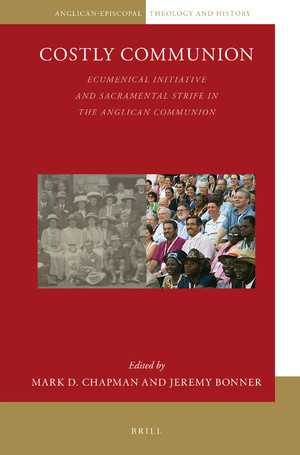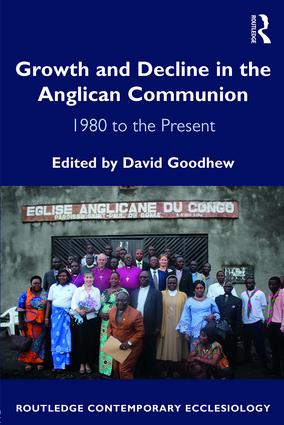Gerald wrote in his will: I desire that I be buried according to the rites of the Book of Common Prayer of 1662 . . . with a celebration of the Holy Communion and without any eulogy or encomium though I ask for the prayers of my friends. His family wanted to do as he wished, but funerals are also for the living, and we want to celebrate all Gerald was and did, so we have put together this necessarily incomplete tribute.
*********************************
He made you feel honored when he spoke to you, even when you felt you weren’t really deserving of such honour. The verdict of the last clergyman to minister to his spiritual needs embodies the life of Gerald Bonner, a life that transported him from the pre-World War II London borough of Haringey to a distinguished visiting professorship at the Catholic University of America in Washington DC.
The child of an ex-Indian Army officer and a London County Council primary schoolteacher, Gerald was called upon to take up responsibilities at an early age following the premature death of his father. His dedication to repaying the sacrifices of the mother who raised him and to caring for his younger brother Nigel stayed with him throughout his life and he held in high regard the person of Father Damien, the Roman Catholic priest who gave his life for the lepers of Molokai.
A scholarship boy at the Stationers School, he joined the Army in 1944 and saw postwar service with the King’s Dragoon Guards in Palestine. In 2011, when the uprising against Colonel Gadaffi was in its formative stages, he recalled how the troopship carrying him home had docked at a “one-camel hamlet” called Misuratah. After demobilization, he went up to Oxford for three years of study at Wadham College (1949-1952), which he often remarked would have been impossible without the university grant for ex-servicemen.
From Oxford, he entered into service at the British Museum, where he would serve as a keeper of manuscripts for over a decade. During these years he demonstrated a zeal for independent scholarship that led to the publication of his seminal study of St. Augustine of Hippo in 1963. He was also an enthusiastic participant in the work of the Fellowship of St. Alban and St. Sergius, building connections with prominent Anglican and Orthodox churchmen. He spoke regularly at the Fellowship’s annual conference, and was an irrepressible teller of anecdotes at the Entertainment on the final evening.
In the mid-1960s, at the instigation of Professor Hugh Turner, Gerald was invited to Durham to join the Theology Department, where he served as the resident historian among a group of theologians. For many years he carried the burden of teaching church history from the patristic era to the present day. He started courses on Augustine of Hippo, and also on St. Cuthbert and St. Bede, as he felt it wrong that, at that time, nobody in the Theology or History Departments was working academically on the two northern saints whose mortal remains lay in the Cathedral.
Gerald organised a conference on Bede in 1973, attended by around ninety scholars from many countries, and later edited the proceedings under the title
Famulus Christi. Bede was also the subject of Gerald’s 1966 Jarrow Lecture, and of his Cathedral Lecture in 1970; more recently, he suggested, at the request of Canon Jones, the text to be put above Bede’s tomb. The guides tell us that this text is an inspiration to visitors and pilgrims at the Cathedral, some even making return visits to pay their devotion. In 1986, David Rollason, Clare Stancliffe and Gerald collaborated in organizing a conference on Cuthbert, and although Gerald felt that his own contribution to this was small, David has written very appreciatively of the help he gave.
Retiring early in order to guarantee that a successor would be appointed, he was granted a new lease of academic life with his selection as Distinguished Visiting Professor of Early Christian Studies at the Catholic University of America (1990-1994). Here he found a community that valued his gifts and students who represented an academic crème de la crème. CUA knew his calibre and set an appropriate value on it. Five years later, Villanova University (a Catholic institution near Philadelphia, where he had delivered an Augustinian lecture in 1970) offered him a semester’s teaching that proved equally rewarding.
He taught several summer schools at Nashotah House Seminary in Wisconsin, following in the footsteps of Michael Ramsey; and was an invited lecturer at academic institutions from Vancouver to Rome, with many places in between. His reputation as an international authority on Augustine was further demonstrated by requests to contribute so many articles to the mammoth
Augustinus Lexikon, though he remarked that he was unlikely to be around when the article on Zosimus was needed!
Gerald’s book on Augustine has since been reprinted in paperback; and some of his many articles on Augustine, Bede, Cuthbert, and early church controversies, have been published as collected volumes. A further volume was planned, but his deteriorating health prevented this. He was very touched to be honoured with a
Festschrift edited by Augustinian friends in Rome.
As well as his writing, Gerald was always generous with help and encouragement to students, colleagues and friends. A young Austrian scholar who was attempting to catalogue all the Augustinian manuscripts in English libraries found the task taking longer than expected. Gerald responded by spending several days in Salisbury Cathedral library that summer, and several at Holkham Hall in the depths of a very cold winter, to help out in the cataloguing. He welcomed all comers, and was only too glad to share information and insights; he was ‘given to hospitality,’ whether in welcoming new members of staff, entertaining visiting colleagues, or simply bringing old and new friends together for the pleasure of their company. Some will remember him enthusiastically stoking the bonfire and letting off fireworks at our annual bonfire party, whose participants ranged in age from ten weeks to their early nineties.
Gerald eschewed the combative enthusiasm of many Anglican conservatives, but he never allowed that to impede his deeply held convictions. He was deeply committed to upholding the sanctity of life, speaking and writing to that effect in the public arena. In 1994, after the narrow vote by the General Synod in favor of the ordination of women, he long agonised about his decision not to take up his seat in General Synod in order to accept an American professorship. Convinced of the unwisdom of a decision which might impede the reunification of Catholic Christendom, he had trouble accepting that his presence would not have changed the outcome.
He remained a devoted Anglican, being a regular worshipper both at the Cathedral and here at his parish church, where he was a Server at the early morning communion services until infirmity made this impossible. He was always ready to help in any way he could, and one year, when the then vicar was particularly overstretched, Gerald took the weekly service at the Low Newton Remand Centre, doing everything himself, taking the service, giving an address and playing the piano for the hymns.
Gerald was a man of deep learning and powerful convictions, who made it a point never to neglect contact with those he knew. He kept up a regular correspondence with family and friends and his letters were by turns entertaining and profound. In many ways a pessimist (a preoccupation with Augustine’s theology could hardly have made him anything else) and with a private side that even those closest to him could not touch, he nevertheless loved his wife, his children and grandchildren, and the many friends he made over a lifetime that saw his world change out of all recognition. If his loss is grievous to us all for a little while, those whose lives he touched have but to follow the example that he set for them.
He used to say that the
Dies Irae, with its emphasis on sin and judgement, was the only suitable hymn for a funeral: but he touched many lives for good, and we pray that his sins may be forgiven and his love and kindness remembered.
May he rest in peace, and may light perpetual shine upon him.
*********************************
We would like to say how grateful we are to all the staff at Melbury Court, where Gerald spent the last five months of his life. They cared for him so well, and with such kindness and consideration, and gave such support to us as well. He couldn’t have been better looked after, and we are so grateful for all they did.
*********************************
There have been so many loving tributes to him in the letters that we have received that we wish there was space to give them all:
Gerald was always a gallant gentleman among academics, a link with a world that has passed I think, a world of high principle, courageous views, and scholarship untainted by the modern grab-every-opportunity-you-can.
It is [Gerald’s] capacity for forgiveness and reconciliation that is above all etched on my mind whenever I think of him . . . [He] was a great-hearted man; just to think of him puts me in fuller touch with the sense of the love of God that is the foundation of life itself.
I had many conversations with Gerald over the years, mostly on the road to and from St. Cuthbert’s, and invariably found him engaging company . . . I shall remember him as he was, with his good-humoured and ironic acceptance of the odd ways of the world.
He was always such a good raconteur. We shall remember him as a lively and knowledgeable teacher who brought fun to the lecture room.
Gerald was a great man and a great scholar. For me, he was a humbling inspiration to whom I owe more than I can say.
Even though I was never a great fan of Augustine of Hippo, I received from Gerald warmth and encouragement for which I am ever grateful. I will look back fondly on his contribution to my life, a contribution that extended well beyond any immediate academic involvement. He was a wonderful scholar and a true mentor.
[Gerald] was always so kind and encouraging to me in my academic work; and a good friend who will be much missed.
Gerald was an enormously faithful friend over the years since Oxford days. There must be many, many people whom his friendship and goodness have touched.
His life goes on through his immense scholarly achievement and the inspiration and care he gave to his students and postgraduates. I remember with special gratitude and affection his genial kindness to a very half-baked young librarian, when I first came to Durham, and his ready help with any enquiry.
[He] took an interest in and had a kind word for “new hands” . . . What impresses me is not only Gerald’s own learning but also his humility and humanity – the work of a truly great scholar, to which his many publications bear eloquent testimony.
One of my earliest memories, as a very small child, was Gerald giving me a model Rolls Royce, powered by batteries - an inspired gift that few would have made for a little girl in the 1950s. I went on to make model ships, build Bayco houses, and eventually drive a tank! I still have the atlas Gerald gave me on my twelfth birthday and although many countries have changed their names and boundaries, it is a much loved book and I use it frequently.
He was a lovely man and will be dearly missed.









